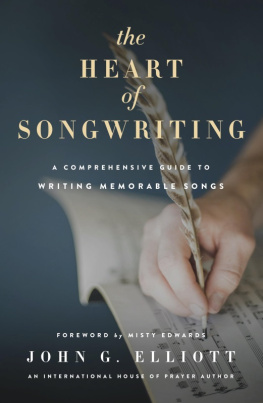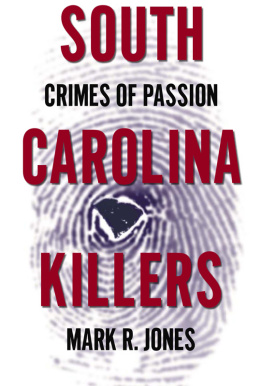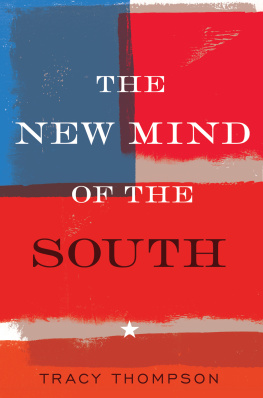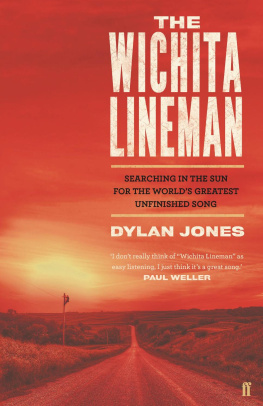PREFACE
Im not a musicologist, by training or by trade. My degrees and my teaching of university courses for thirty-eight years were in English literature and theatre, mostly the latter, primarily as a theatre historianespecially of musical theatre. But my lack of music education didnt affect my exploration of sixty years of professional songwriting about the South, since most of my emphasis is on the lyrics of those songs, with only occasional remarks about their melodies, musical styles, and related matters. My background in the content analysis of literature and plays (including musicals) prepared me to tackle this subject, and Im no stranger to writing about popular music, considering my The Songs That Fought the War: Popular Music and the Home Front, 19391945 (UP of New England, 2006).
When looking at musicals, songs, or other topics Ive written on, such as home front life during World War II, I am by inclination and practice a cultural and social historian, with a penchant for placing what I call the cultural artifacts (musicals, songs) in larger historical, cultural, and social contexts to see what sense I can make of them in the aggregate, not as individual items each unto itself. Call me, if you will, an empirical historian, preferring to work with primary materialsin this case the sheet music of the songsrather than with secondary works, except for historical or biographical background information as necessary. Accordingly, I dont approach a subject Im working on with a preconceived theory, thesis, or agenda. Instead, I examine each artifact in turn (in this book, the 1,079 Dixie tunes for which I found sheet music in various libraries, plus one song only on a phonograph record), listen to what each one has to say to me, and then try to tell its story, along with the stories of all the other artifacts, drawing from them a unifying theme, idea, or historical vision. For this book that vision started to come very early in my research while I was still amassing photocopies of sheet music I would eventually write about, and long before I was writing; yet it wasnt a predigested idea of mine, but something that came from the primary material, the songs, I was reading.
I began gathering sheet music at the John Hay Library, the special collections library at Brown University in Providence, Rhode Island, where I live. With its collection of over 140,000 pieces of American sheet music, the John Hay, along with the libraries at UCLA, Duke, and Johns Hopkins, and the Lilly Library at Indiana University, houses one of the largest archives of American song in the United States. Of the 1,079 published songs about the South that I ultimately acquired, about 900 came from the John Hay alone. Without getting too far ahead of myself for what will be the books major thrust, while at the Hay seeking songs in the boxes of American vocal music arranged only alphabetically by title regardless of date, authorship, or subject, I learned that most of what I call Dixie tunes, written mostly by northern, urban Tin Pan Alley songwriters, had as their theme the idealizing, glorifying, or romanticizing of the South, and not the South of some distant past but the South contemporary with the writing and publishing of each individual song. These songs disseminated, and helped create, a twentieth-century version of the moonlight and magnolias vision of an idyllic South that imbued the American popular imagination for over half a century. This was not identical with the moonlight and magnolias component of the two nineteenth-century myths created by southerners for southerners, the antebellum Plantation Myth and the postbellum Lost Cause Myth, but something different, as discussed in Chapters 8 and 9. But I learned all that only when I was much farther on in my research and writing.
Since I intend my books more for general audiences than for academic ones, I do not weigh them down with the heavy apparatus of hundreds upon hundreds of endnotes (or footnotes) simply to document my sources. Its my belief that endnotes are best reserved for discursive discussions in scholarly works for scholarly readers, since they often carry the discourse into directions not entirely germane to the main thrust of the book. Since I prefer saying all I have to say in the body of the text, I have no use for such endnotes, and I loathe the thought of having readers, especially general readers, chasing hundreds of superscript numbers to the back of the book only to find a citation to, say, nothing but the place, date, and publisher of a song. So, as in my previous books, also mostly for general readers, I have adopted a slightly modified version of in-text parenthetical documentation as laid out in Chapter 7 of Joseph Gibaldis MLA Style Manual and Guide to Scholarly Publishing, 2nd ed. (New York: The Modern Language Association of America, 1998). I have used such in-text parenthetical citations to identify books and articles, which normally include merely the authors last name and the page reference to the quotation cited or idea discussed, such as (Goldberg 173). A reader may find from just the authors name the full publishing information for his or her book in the Bibliography. If an author wrote more than one book I cite from, a short form of the title is also included, such as (Reed, Southern Folk 31). For documentation of sheet music, lyricists and composers of songs are always mentioned in the body of the text, so they dont need to be repeated in the parenthetical. In each instance, the publisher and date are provided, but not the page number of quotations, since all the songs run only between two and five pages in the sheet music. For conciseness, I often omit such tags as & Co. from the name of publishers, and I cite the city of publication only if it is not New York. Thus, for example, in the documentation for a quotation from Jack Yellen and George L. Cobbs Alabama Jubilee, the parenthetical citation would be (Jerome H. Remick, 1915). For a song published elsewhere than New York like My Girl From Dixie with words and music by Raymond A. Browne and Robert J. Adams, the form is (Chicago: Sol Bloom, 1900). For the source of quotations or other information I cite from personal e-mails from scholars and other experts in fields germane to the book, the parenthetical gives the last name of the e-mails sender and a note that the e-mail was sent to me, plus the date, as in (Silber e-mail to the author, December 23, 2011). Silber is identified in the text as Nina Silber, history professor at Boston University and author of











